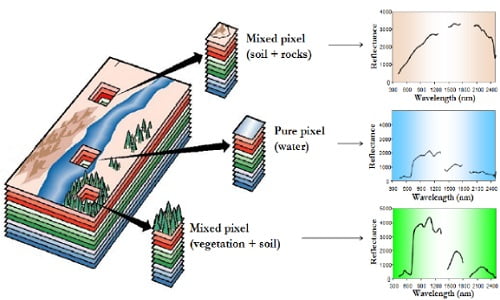HYPERSPECTRAL IMAGES USING COMPUTATIONAL ENGINEERING
FORMATION OF HYPERSPECTRAL IMAGES USING COMPUTATIONAL ENGINEERING

Images are quite often used for comparison to identify changes in an environment. The field of Computational Engineering is able to model and analyze such changes and for that, different types of images are considered.
The most common of these images is a three-layer RGB image which symbolizes the environmental condition viewed at Red wavelength, Green wavelength, and Blue wavelength all layered together on top of each other to form a single-color image.
Adding further layers at various wavelengths now exceeding the three layers, the image enters the multi-spectral and hyper-spectral image domain. As points of observation (wavelength) have increased, so have the details or information collected from the image.
To form such images, material conditions are required. Major recent works aim for a modeling, analysis, and prediction tool for generating IR signature with segmental analysis of various environments (water, vegetation, rocks, etc.) based on transient heat transfer, flow state, and material composition (e.g., density, specific heat, thermal conductivity).
To reduce errors of computation when compared with actual experimental results, experimental emissivity and reflectance are introduced for IR signature calculation.
As experimental data is being introduced into the computation model, the replicability of the model will be near to real experimentation.
Before the generation of the spectral signature model, the color images are segmented. These segmented images are identified and loaded with predetermined material properties.
These values are utilized to compute surface temperature using the transient heat transfer model. Similarly, using the surface temperature, the spectral irradiance is assigned to a pixel map generating a static irradiance hyperspectral model within the spectral range of visible to infrared (0.4 to 14.0 μm) as determined by the number of layers of environmental conditions.
These hyperspectral models have been incorporated in applications including remote sensing, food quality assessment, environmental monitoring, medical diagnostics, etc.
By: Sonia Munawar